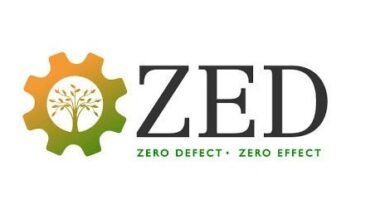Asset Reconstruction Companies (ARCs)
Context:
The RBI has set up a committee headed by Sudarshan Sen to undertake a comprehensive review of the working of asset reconstruction companies (ARCs) in the financial sector ecosystem and recommend suitable measures for enabling them to meet the growing requirements, on following term
- To review the existing legal and regulatory framework applicable to ARCs and recommend measures to improve efficacy of ARCs.
- To review the role of ARCs in the resolution of stressed assets, including under the Insolvency and Bankruptcy Code (IBC), and give suggestions for improving liquidity in and trading of security receipts.
Asset Reconstruction Company (ARC)?
- At the time of the Asian Financial Crisis, India’s non-performing assets stood at a whopping 14.4 per cent. It was in this context that the Narasimham Committee (1998) recommended setting up an ARC specifically for purchasing NPAs from banks and financial institutions
- Following this, the Securitization and Reconstruction of Financial Assets and Enforcement of Security Interest (SARFAESI) Act, 2002 was enacted in December 2002 which provides the legal basis for the setting up ARCs in India
- The asset reconstruction companies or ARCs are registered under the RBI
- It helps the bank clear up its balance sheets and concentrate in normal banking activities
- The ARCs take over a portion of the debts of the bank that qualify to be recognised as Non-Performing Assets. Thus ARCs are engaged in the business of asset reconstruction or securitisation or both
- The ARC can take over only secured debts which have been classified as a non-performing asset (NPA)
- A few of the existing ARCs in India, which are being regulated by the Reserve Bank of India include:
- Asset Reconstruction Company (India) Limited (ARCIL)
- ASREC (India) Limited
- Reliance Asset Reconstruction Company Limited
- India SME Asset Reconstruction Company Limited (ISARC)
- International Asset Reconstruction Company Private Limited; and more
What are ARCs or bad banks?
- Asset reconstruction is the purchase of title or rights of the banks or financial institutions in loans, bonds, debentures, etc., for recovery or realization.
- ARC is a specialized financial institution for buying stressed assets from banks and financial institutions.
- Banks can sell their stressed or bad assets to the ARC at a mutually agreeable price.
- This will help banks to clean up their balance sheets and concentrate on delivering normal banking services.
- So, the ARC would recover the bad debts or associated securities in a market-led process.
Who funds the ARCs to buy NPAs from banks?
- An ARC can issue bonds, debentures, and security receipts to raise funds.
- ARC issues the receipts to a qualified institutional buyer to raise funds and make an upfront payment to buy the discounted bad debts. It is known as a security receipt.
- The security receipt gives owners the title, right, or interest in the financial asset.
How does ARC resolve the stressed assets?
- As per the SARFAESI Act, an ARC can
- Restructure or reschedule the loan,
- Enter into settlements, sell or lease the borrower’s business,
- Take over or change the management, and engage in security interest enforcement (sell, take possession, or lease the owned asset).
- But enforcement or security interest can only be conducted when at least 75% of secured creditors and the ARC agree.
- In case of the debt being unsecured and the ARC being unable to recover the bad loan, they can file civil suits against the creditors.
Where lies the difference between ARCs and IBC?
- The Insolvency and Bankruptcy Code (IBC) was introduced to resolve and reorganise insolvent companies.
- ARCs are set up for clearing up NPAs. ARCs primarily deal with recovery, while the IBC seeks a resolution.
- In the resolution process the creditors are given the chance to make insolvency resolution an economically viable process and entities can apply for insolvency, bankruptcy, or liquidation.
Which are the rules and regulations for ARCs?
- The setting up of an ARC is regulated under the SARFAESI Act, 2002.
- An ARC is required to have a net owned fund of ₹100 crores and maintain a capital adequacy ratio (CAR) of 15% of its risk-weighted assets.
- The NPAs are to be transferred to the ARC at a reasonable price backed by an arm’s length principle that is, at the net book value.
Netbook value = Asset value – Bank provisioning against the stressed assets.
- For the bad assets, the banks will obtain 15% cash, and the balance could be by way of bonds or debentures with a maximum maturity period of 6 years and security receipts issued by the ARC.
How Arc Work:

What is the SARFAESI Act?
- The Securitisation and Reconstruction of Financial Assets and Enforcement of Security Interest Act, 2002, more commonly known by its shorter name SARFAESI Act, is legislation that allows banks and other financial organizations to recover bad loans effectively.
- The act can be utilized to tackle the problem of Non-Performing Assets (NPAs) through different procedures.
- Basically, the SARFAESI Act empowers financial institutions to ‘seize and desist’. The Act also provides for the establishment of Asset Reconstruction Companies (ARCs) to acquire assets from banks and other financial institutions.
Discover more from Simplified UPSC
Subscribe to get the latest posts sent to your email.



